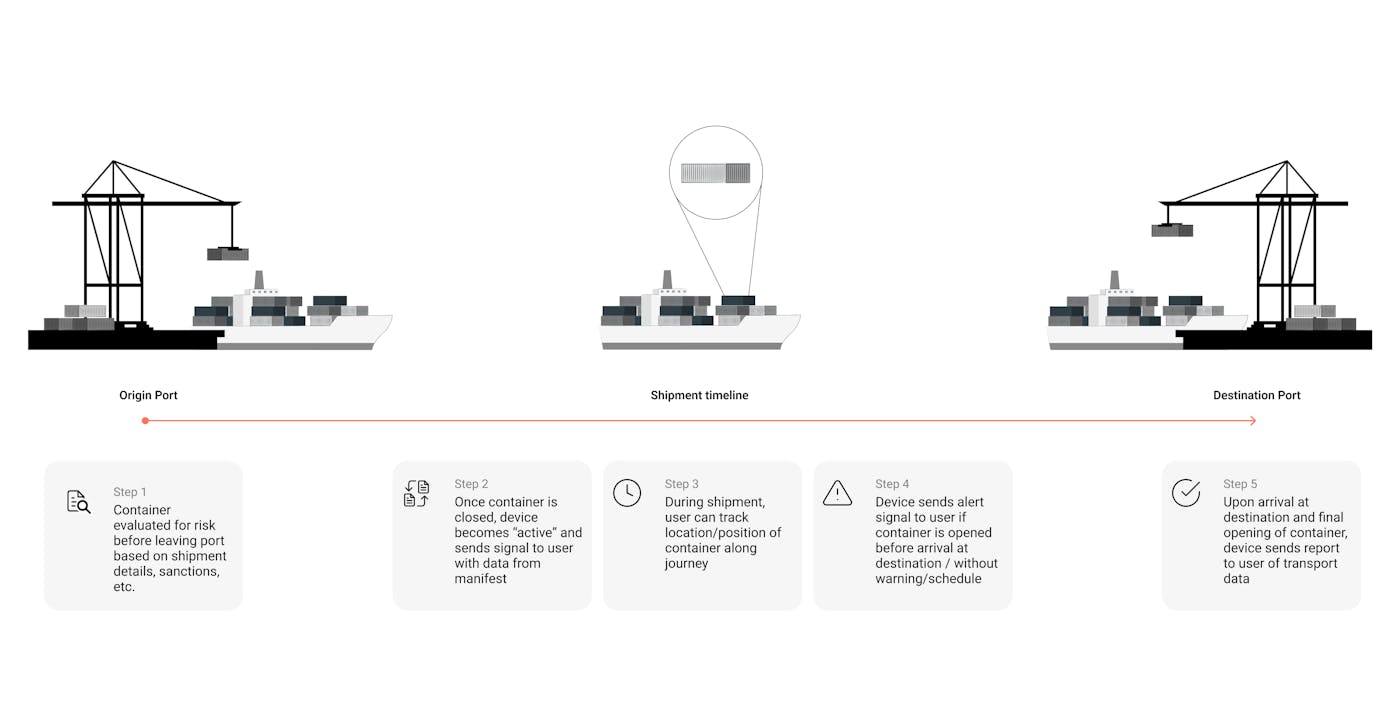Port terminal operators
Improve efficiency, security, and space utilization while streamlining customs processes.

- APM Terminals
- MSC Terminals
- "Dubai / Emirates" Terminals
The problem: Ports rely on fragmented tracking systems, manual inspections, and disparate data sources to monitor container movements. Delays from inefficient coordination between customs, shipping lines, and security agencies result in congestion, high storage costs, and security risks, such as smuggling or cargo theft. The lack of real-time visibility makes it difficult to proactively manage risks and optimize space utilization.
How Boxhound can help: Real-time tracking and automated risk scoring reduce bottlenecks, allowing ports to prioritize high-risk shipments and optimize container flow. Enhanced security through access monitoring minimizes theft and smuggling, while improved data integration streamlines customs and port operations, reducing storage costs and delays.
What can we de facto offer a terminal operator (at this point in time)?
They do not have access to the containers and cargo and have no decision making power regarding such access?
They do In time (when we have sufficient data) we can support a claim that the containers are safe at a given terminal, because even the terminal would not necessarily know if this is the case. I am not even sure what they do if they find a container open - probably shut the doors and close their eyes until it is on a ship and out of their responsibility.
But we can provide info on any un-authorized access during the terminal stay to the shipper, law enforcement and insurer.

Value for port terminal operators
Improved port efficiency
Real-time tracking enables better scheduling and reduces congestion by optimizing the movement of containers within the port.
Enhanced security
Tracking reduces the risk of theft, smuggling, and unauthorized access by providing visibility on container movements.
Faster customs clearance
Accurate tracking helps customs officials identify and prioritize shipments, reducing delays.
Optimized space utilization
Knowing the exact location of containers allows ports to manage space efficiently and reduce bottlenecks.
Containerized trade is projected to grow at an average of 2.7% annually through 2029.
